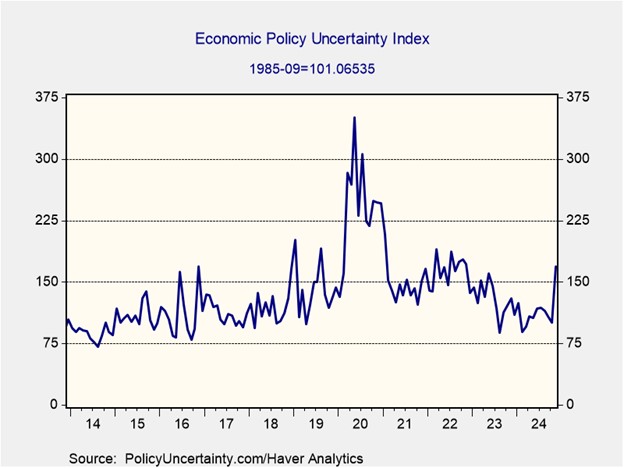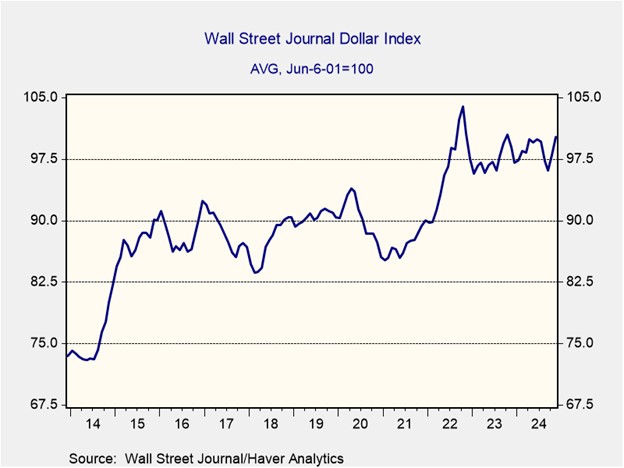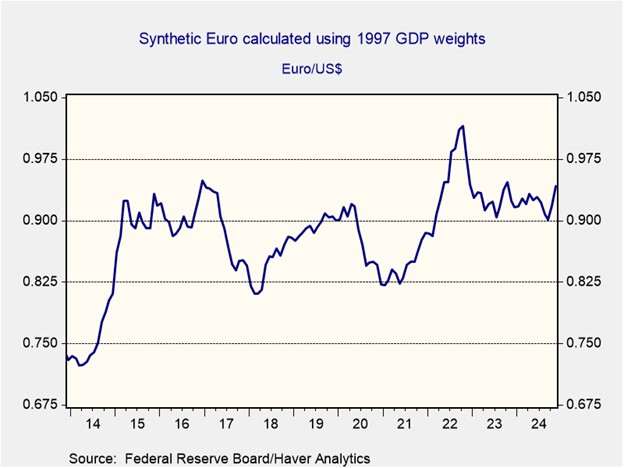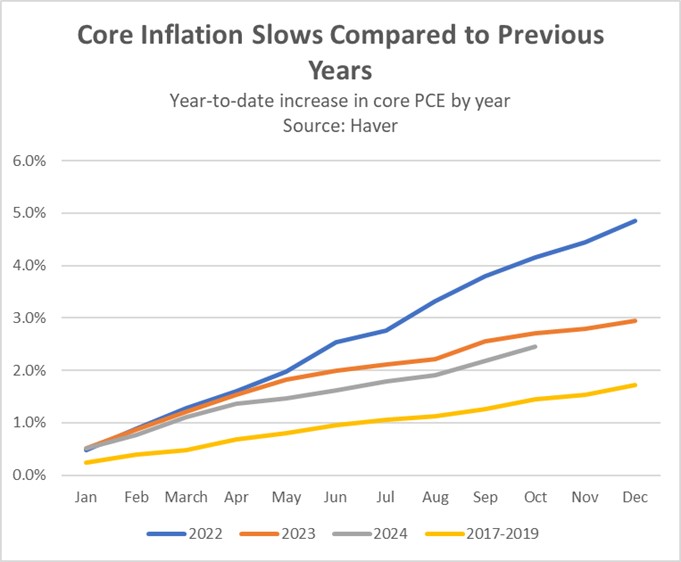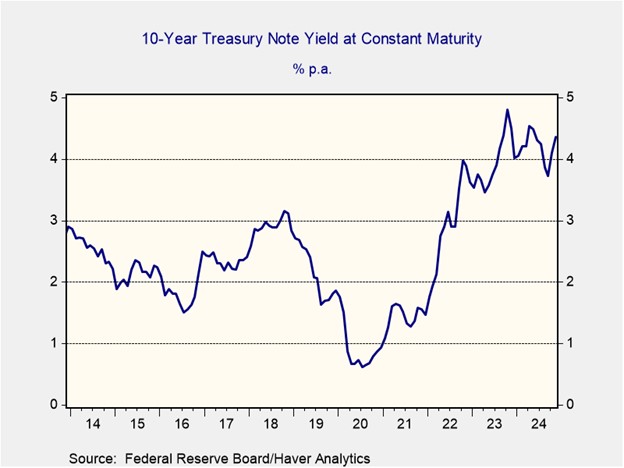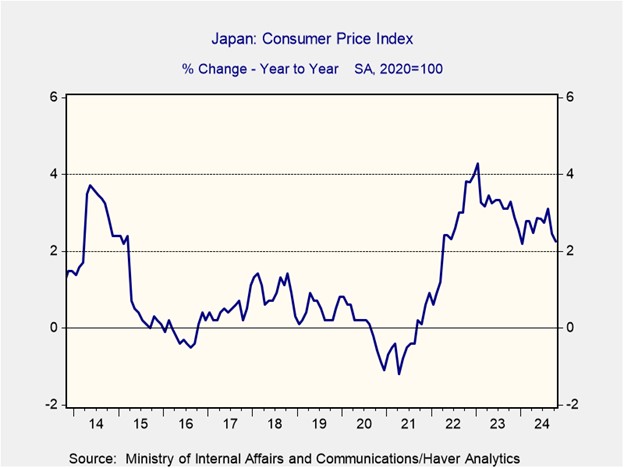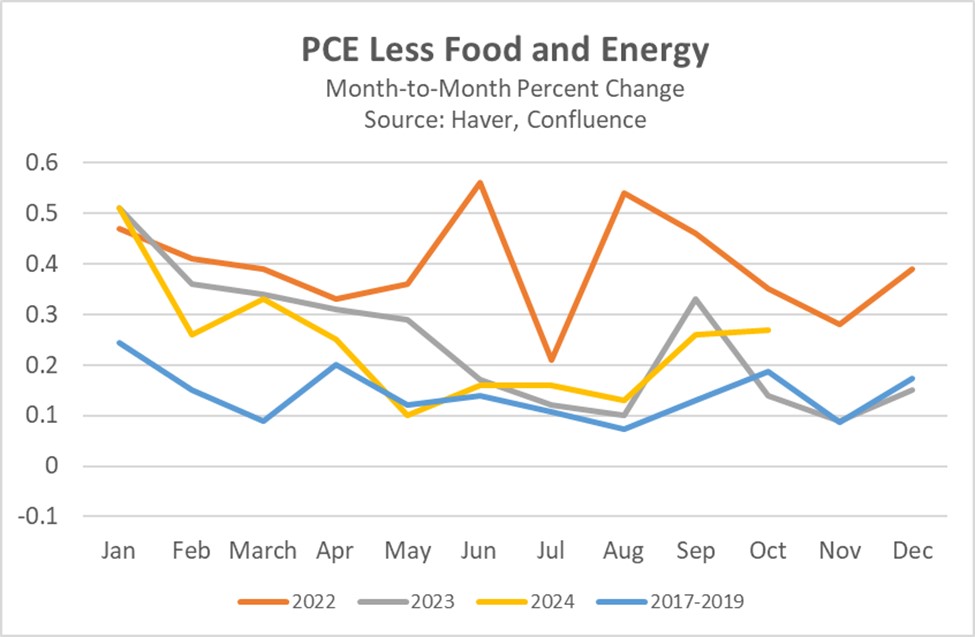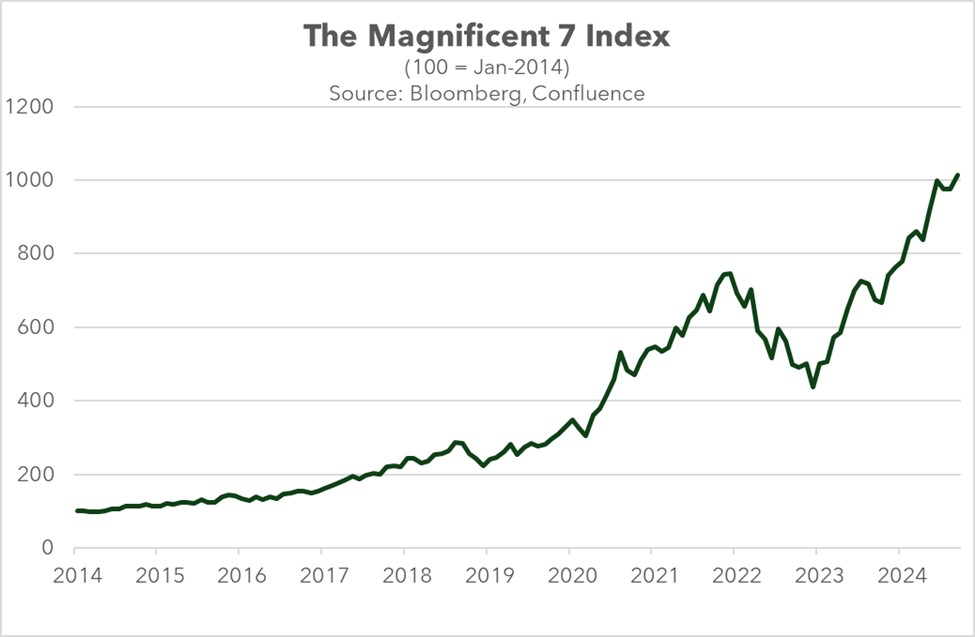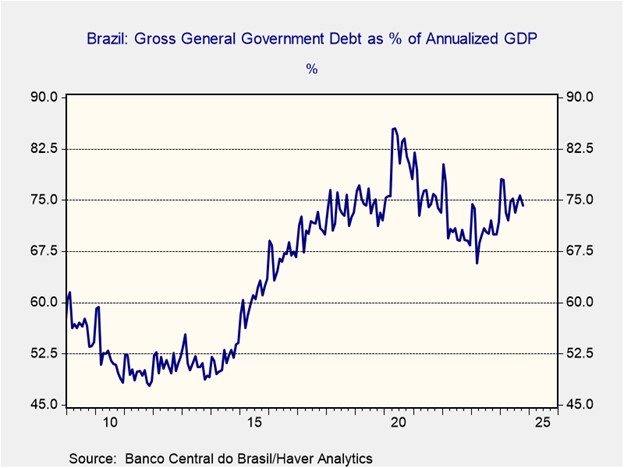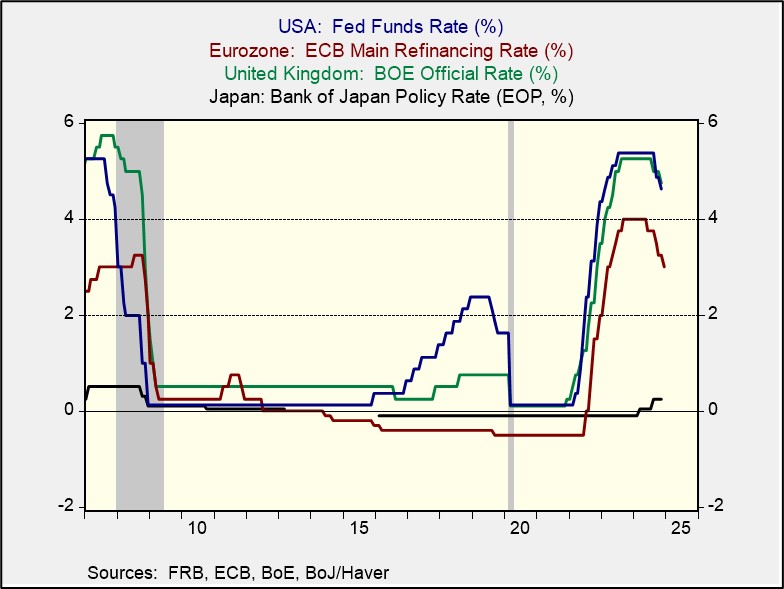by Patrick Fearon-Hernandez, CFA, and Thomas Wash
[Posted: 9:30 AM ET] | PDF
Note to readers: the Daily Comment will go on hiatus after today’s Comment and will return on January 6, 2025. From all of us at Confluence Investment Management, have a Happy Holiday and a Happy New Year!
Our Comment today opens with new US trade action against China, this time setting the stage for President-elect Trump to eventually impose trade barriers and punitive tariffs against China’s relatively less-expensive “legacy” computer chips. We next review several other international and US developments with the potential to affect the financial markets today, including Trump’s message to European leaders that he will maintain US military aid for Ukraine in return for them hiking their defense spending to at least 5% of GDP, and some observations on the new stopgap spending bill that Congress passed over the weekend to keep the federal government funded until mid-March.
United States-China: The Biden administration today opened an investigation into China’s use of “anti-competitive, non-market” measures to promote its legacy semiconductors. The probe targets China’s relatively cheap, less advanced, commoditized chips of the types used heavily in the automotive, healthcare, infrastructure, aerospace, and defense industries. When the probe is completed under the new administration, President-elect Trump could be empowered to impose trade restrictions or tariffs on the Chinese chips to protect US producers.
- The new probe follows more than two years of US efforts to restrict the sale of advanced semiconductors and semiconductor technology to China. The aim of those efforts is to constrain China’s military development so it would be less of a threat.
- If new restrictions are placed on importing China’s legacy chips, it would be yet another example of how global supply chains are fracturing amid the US-China rivalry.
- As we’ve argued many times before, this global fracturing is likely to boost price inflation and interest rates over time.
United States-Europe: President-elect Trump has reportedly told European leaders that he will continue providing US military aid to Ukraine while it negotiates for a peaceful end to Russia’s invasion. However, in return for that aid, he will demand that the non-US members of the North Atlantic Treaty Organization hike their defense spending to at least 5% of gross domestic product, up from the currently agreed standard of 2%. He will also demand that they provide better trade terms to the US.
- Trump’s demands will be discussed during a NATO summit at the Hague in June.
- Trump’s demand for enormous defense spending hikes by the non-US members of NATO is further evidence that he will seek outright cuts to the US defense budget, probably to help pay for extending the 2017 tax cuts. Any such cuts to US defense spending would likely fall heavily on the big, traditional US defense industry “primes,” but they would probably favor smaller firms providing cheaper, technology-enabled defense products, such as those in the new consortium further discussed below in the Syria comments.
Iran-Jordan-Israel: Jordanian and Israeli intelligence officers reportedly held a secret meeting on Friday to coordinate efforts to stop Iran from smuggling weapons and explosives into Jordan, from which some have been smuggled to Palestinian militants in the West Bank. The meeting illustrates how Iran is still trying to leverage proxies to destabilize Israel and nearby enemies, despite the body blows it’s recently suffered from Israel’s military action in the region and the fall of Syrian dictator Bashar al-Assad.
- Although Iran hasn’t entirely given up supporting its Middle Eastern proxies, it’s failure to protect Assad, Hezbollah, and Hamas has greatly undermined its political position both internationally and domestically. The survival of the theocratic regime in Tehran is probably more in question now than it has been in decades. Whether it survives and how it might falter would have huge implications for global energy supplies and prices.
- Adding to the government’s vulnerabilities, Iran is now facing an energy crisis. After years of foreign sanctions and domestic mismanagement, the energy system can’t produce enough natural gas to heat homes and generate needed electricity. The government has therefore curtailed power supplies to industry, closing down factories, retail shops, and offices.
Syria: In a weekend report dissecting the Syrian government’s fall, the New York Times said the rebels’ ability to wield hundreds of strike drones against Syrian army command posts was a key military advantage. Of course, Assad’s fall stemmed mostly from Russia and Iran refusing to give additional military support and Assad’s army being in an advanced state of rot, while Turkey and other outside powers upped their materiel and intelligence aid to the rebels. Still, the report is more evidence of the critical role that drones have taken in modern war.
- According to other reports we’ve seen, even Ukraine sent a significant number of drones and more than a dozen operators to help the rebels, probably in part hoping to create a distraction for the Russian military.
- In any case, there is mounting evidence that large numbers of small, cheap, expendable drones have become a key determinant of military power. The large, expensive, “exquisite” systems that the US military specializes in (aircraft carriers, fighter jets, tanks, and the like) are still important, but countries around the world will now need to shift more resources to drones of various types, creating new winners and losers among defense industry firms.
- Indeed, the Financial Times yesterday scooped that more than a dozen younger, smaller US defense technology firms specializing in areas like artificial intelligence and aerospace are forming a consortium to jointly bid on Pentagon contracts and get more of the US defense budget. Top companies in the consortium include SpaceX, Palantir, and Anduril.
North Korea-Russia: While observers continue to focus on Pyongyang’s provision of troops to Russia for its war against Ukraine, new satellite imagery shows North Korea has also recently ramped up its arms shipments to the country. According to the Ukrainian military, North Korea is now providing 60% of the artillery and mortar shells that Russia fires at Ukrainian forces each day, along with about 30% of the ballistic missiles it is firing. In return, North Korea has reportedly received cash, oil, food, and perhaps even fighter jets and air defense systems.
- The discovery is consistent with our view that the major countries in the China-led geopolitical bloc are increasingly cooperating, coordinating, and collaborating.
- If China, Russia, Iran, and North Korea continue to draw closer and pool their resources, they would likely become an even more formidable rival to the US-led bloc, as we outlined in our Geopolitical Outlook for 2025, published last week.
Japan: Major automakers Honda and Nissan today announced that they have entered formal negotiations to merge. Including Nissan’s partner Mitsubishi, the resulting company would be the third-largest carmaker in the world, with more than eight million vehicles sold annually. The goal of the merger is to find cost efficiencies and help the firms compete in the face of rapidly changing technologies and increasing competition from Chinese automakers.
Germany: Auto giant Volkswagen and its union on Friday reached a deal in which the firm will keep all its German plants open and avoid any forced job cuts until at least 2030 in return for the union foregoing any further work stoppages. Under the deal, Volkswagen will only be able to cut headcount by early retirements and other “socially responsible” ways, while the union will forego wage hikes and give up certain bonuses. The deal highlights the pressures European auto firms are under from the region’s slowing economic growth and rising competition from China.
United States-Panama: Signaling a possible new foreign policy issue under the incoming administration, President-elect Trump on Saturday complained that US vessels are being charged “exorbitant” fees to transit the Panama Canal and demanded that the Panamanian government either reduce the charges or return the facility to the US.
US Monetary Policy: President-elect Trump yesterday named Stephen Miran to chair his Council of Economic Advisors. Miran was a senior economic policy advisor at the Treasury Department during Trump’s first term, and he is now a senior strategist at hedge fund Hudson Bay Capital Management. Importantly, Miran has also been critical of current Federal Reserve Chair Powell, potentially signaling future tensions between the White House and the Fed.
US Fiscal Policy: On Saturday, Congress passed and President Biden signed into law a new stopgap spending bill that will fund the federal government, largely at current levels, through the middle of March. Additional funding added included about $100 billion for hurricane relief and some $10 billion in aid for farmers. However, the law did not include any boost to or elimination of the federal debt ceiling that President-elect Trump demanded.
- Approval of the stopgap bill pushes off the possibility of a partial shutdown of the government for three months. Investors are likely to welcome the prospect of stable fiscal policy for the time being.
- However, Congress and the Trump administration will now face the likelihood of renewed disputes in March. This fiscal bargaining will give us a sense of how Trump intends to balance the disparate and conflicting demands from the various constituencies in his coalition, as we describe in our 2025 Outlook.



